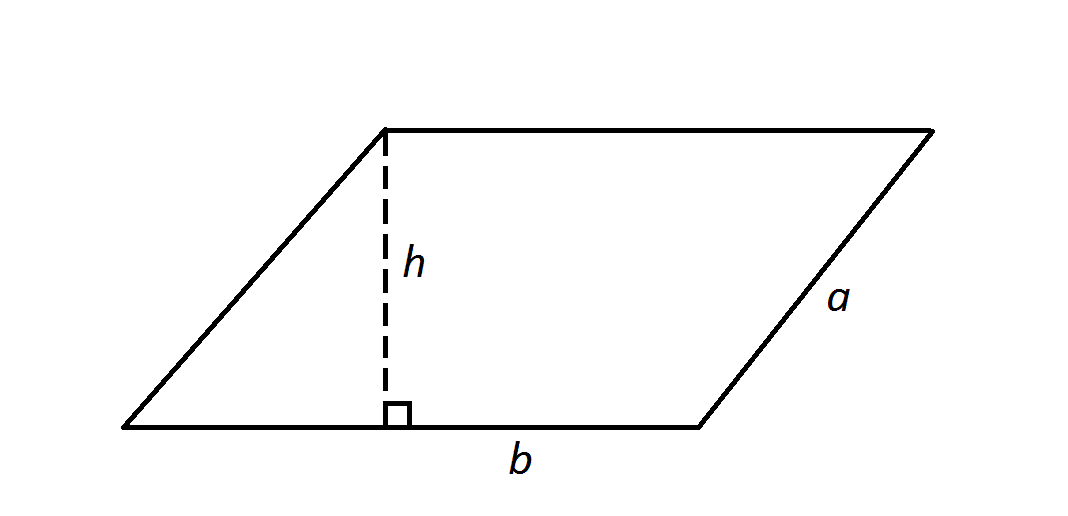All ISEE Middle Level Math Resources
Example Questions
Example Question #175 : Quadrilaterals
If a parallelogram has side lengths of 

The perimeter of a parallelogram is two times the two side lengths and add them together.
Therefore, this particular problem becomes as follows.

and

so

Example Question #2 : How To Find The Perimeter Of A Parallelogram

Note: Figure NOT drawn to scale.




Find the perimeter of the parallelogram in the diagram.
The perimeter of the parallelogram is the sum of the four side lengths - here, that formula becomes

Note that the height 
Example Question #7 : Geometry
Find the area of the following parallelogram:
Note: The formula for the area of a parallelogram is 
The base of the parallelogram is 10, while the height is 5.
Example Question #1192 : Concepts
Find the area:

The area of a parallelogram can be determined using the following equation:
Therefore,
Example Question #171 : Quadrilaterals
You can solve the area of a parallelogram when you know the lengths of each of the sides. True or False?
The area of a parallelogram is found by computing 

Example Question #172 : Quadrilaterals
If a parallelogram has side lengths of 

Cannot be determined.
Cannot be determined.
To find the area of a parallelogram, you use the formula,

Since the height in this problem is not known, you cannot solve for area.
Example Question #181 : Quadrilaterals
Find the area of a parallelogram with a base of 6 inches and a height of 9 inches.
To find the area of a parallelogram, we will use the following formula:
where b is the base and h is the height of the parallelogram.
Now, we know the base has a length of 6 inches. We also know it has a height of 9 inches. Knowing this, we can substitute into the formula. We get
Example Question #1 : How To Find The Area Of A Parallelogram
Find the area of the parallelogram with a base length of 6 and a height of 15.
Write the area formula of a parallelogram.
Substitute the dimensions into the formula.
The answer is:
All ISEE Middle Level Math Resources

















































